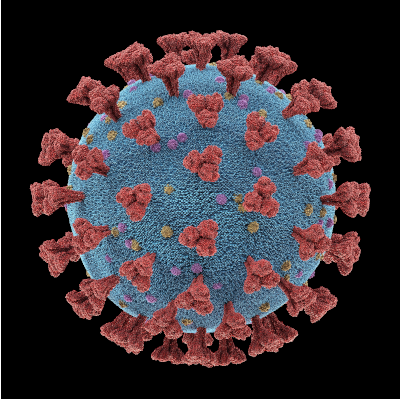Wuhan, the capital of Central China’s Hubei province, is under siege. Hundreds of thousands of people are being screened for fever and observable signs of illness at travel junctures. Nearby airports are closed. Borders are closing.
The microorganism agent had been issued an initial name: 2019 novel Coronavirus. The World Health Organization updated the name 2/11/2020 to COVID-19. In addition to ICD-10-CM codes for diagnosis recording, two other international terminologies have added codes to enable clinical systems to track occurrence through embedded observations and testing: Logical Observation Identifiers Names and Codes (LOINC) for the assay identification and Systematized Nomenclature of Medicine Clinical Terms (SNOMED CT) for the microorganism entities. These two standards development organizations release international versions twice a year (typically January and June), but also have processes in place for non-scheduled events such as disease outbreaks and other issues that impact global health.
The following actions have been taken in the last two weeks internationally for public health surveillance through computer systems. SNOMED CT’s international release was announced January 31st, and even with the typical content life cycle taking months to curate, the dedicated staff provided terms in the organism, substance, event, disorder, procedure and situation domains: 
- 2019 novel coronavirus (organism) – SCTID 840533007
- Antigen of 2019 novel coronavirus (substance) – SCTID 840536004
- Antibody to 2019 novel coronavirus (substance) – SCTID 840535000
- Exposure to 2019 novel coronavirus (event) – SCTID 840546002
- Suspected disease caused by 2019 novel coronavirus (situation) – SCTID 840544004
- Disease caused by 2019 novel coronavirus (disorder) – SCTID 840539006
- 2019 novel coronavirus vaccination (procedure) – SCTID 840534001
SNOMED CT terms are attached within clinician notes electronically and travel with the communications between computer systems. There are specific terms already built for the physical manifestations (fever, coughing, pneumonia, etc.) in the observable entity, finding and disorder domains.
LOINC’s last public release came out December 13th, but a pre-release page at their website is available 365 days a year for new terms. LOINC is used in public health, research and medical laboratories to identify the assay through six attributes: component, property, timing, system (specimen), scale and method. LOINC also has social determinants of health and supporting information terms, such as date of last travel, region of travel, overall travel history, etc. The communication trail was a beehive between the organizations, the US Center for Disease Control (CDC), American public health laboratories and the US Food and Drug Administration (FDA). In the middle of it all, Canada Health Infoway also reached out with an emergency request for new LOINC terms to replace local terms in the provinces. The following LOINC terms are available:
- Orderable panel: 2019 Novel Coronavirus RNA panel – Unspecified specimen by NAA with probe detection (NAA= nucleic acid amplification) [This would be a collection of the following terms] (LOINC code 94306-8)
- 2019 Novel Coronavirus N Gene:PrThr:Pt:XXX:Ord:Probe.amp.tar.primer-probe set N1 (LOINC code 94307-6)
- 2019 Novel Coronavirus N gene:PrThr:Pt:XXX:Ord:Probe.amp.tar.primer-probe set N2 (LOINC code 94308-4)
- 2019 Novel Coronavirus RNA:Imp:Pt:XXX:Ord:Probe.amp.tar (LOINC code 94309-2)
- SARS-like Coronavirus N gene:PrThr:Pt:XXX:Ord:Probe.amp.tar (LOINC code 94310-0)
- 2019 Novel Coronavirus N gene:ThreshNum:Pt:XXX:Qn:Probe.amp.tar.preimer-probe set N1 (LOINC code 94311-8)
- 2019 Novel Coronavirus N gene:ThreshNum:Pt:XXX:Qn:Probe.amp.tar.preimer-probe set N2 (LOINC code 94312-6)
- SARS-like Coronavirus N gene:ThreshNum:Pt:XXX:Qn:Probe.amp.tar (LOINC code 94313-4)
- 2019 Novel Coronavirus RdRp gene:PrThr:Pt:XXX:ord:Probe.amp.tar (LOINC code 94314-2)
- 2019 Novel Coronavirus N gene:PrThr:Pt:XXX:ord:Probe.amp.tar (LOINC code 94316-7)
- 2019 Novel Coronavirus E gene:PrThr:Pt:XXX:ord:Probe.amp.tar (LOINC code 94315-9)
I found it interesting that LOINC created the terms with unspecified specimen, when the CDC’s newly defined protocols call for upper and lower respiratory specimens and serum. LOINC informed me they intended to build the specimen specific terms, but at this point of the surveillance the CDC was willing to rely on other specimens. Currently, there are no FDA approved assays by manufacturers that are available for use. When that time arrives, application by the manufacturers should be made for LOINC terms specific to their capability: LOINCs for whole blood testing, a different term for nasopharyngeal swabs, etc., and then methods will not use “primer-probe set 1 & 2”.
The average time for a new term in the usual LOINC life cycle is currently at 115 days. Median turnaround time is based on values from three release cycles: the last two completed and the current cycle. The public health outbreak and communication with CDC made for a “fast track” situation, and the submission jumped the line for the developers. Sources indicate the emergency cycle time in this instance was 7 days. There isn’t a similar pre-release page or submission viewing queue online for SNOMED CT, but I’m told to expect big things in 2020, such as a continuous release cycle. I applaud this energetic and coordinated effort to support data interoperability in combating the global health threat of the 2019 coronavirus outbreak.

